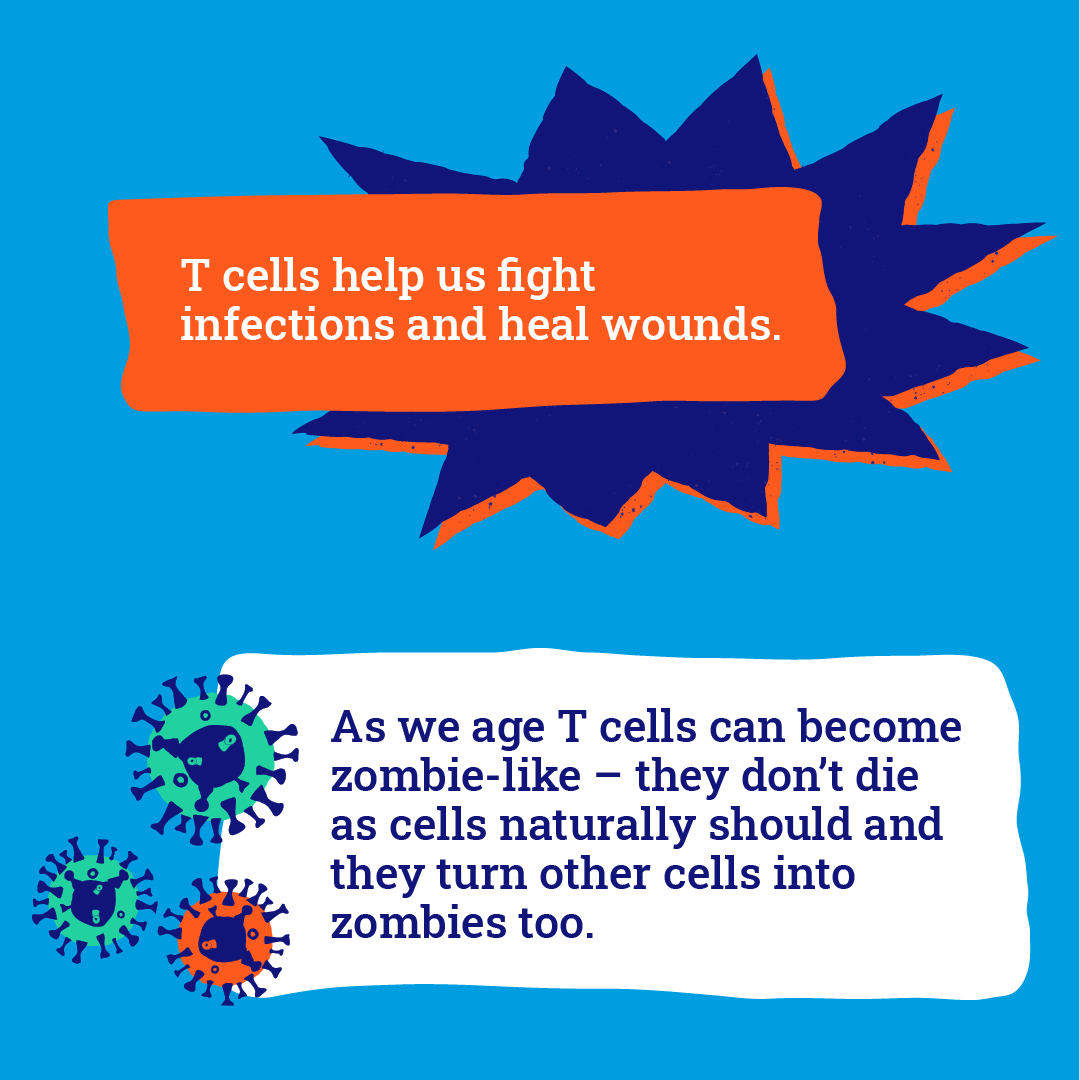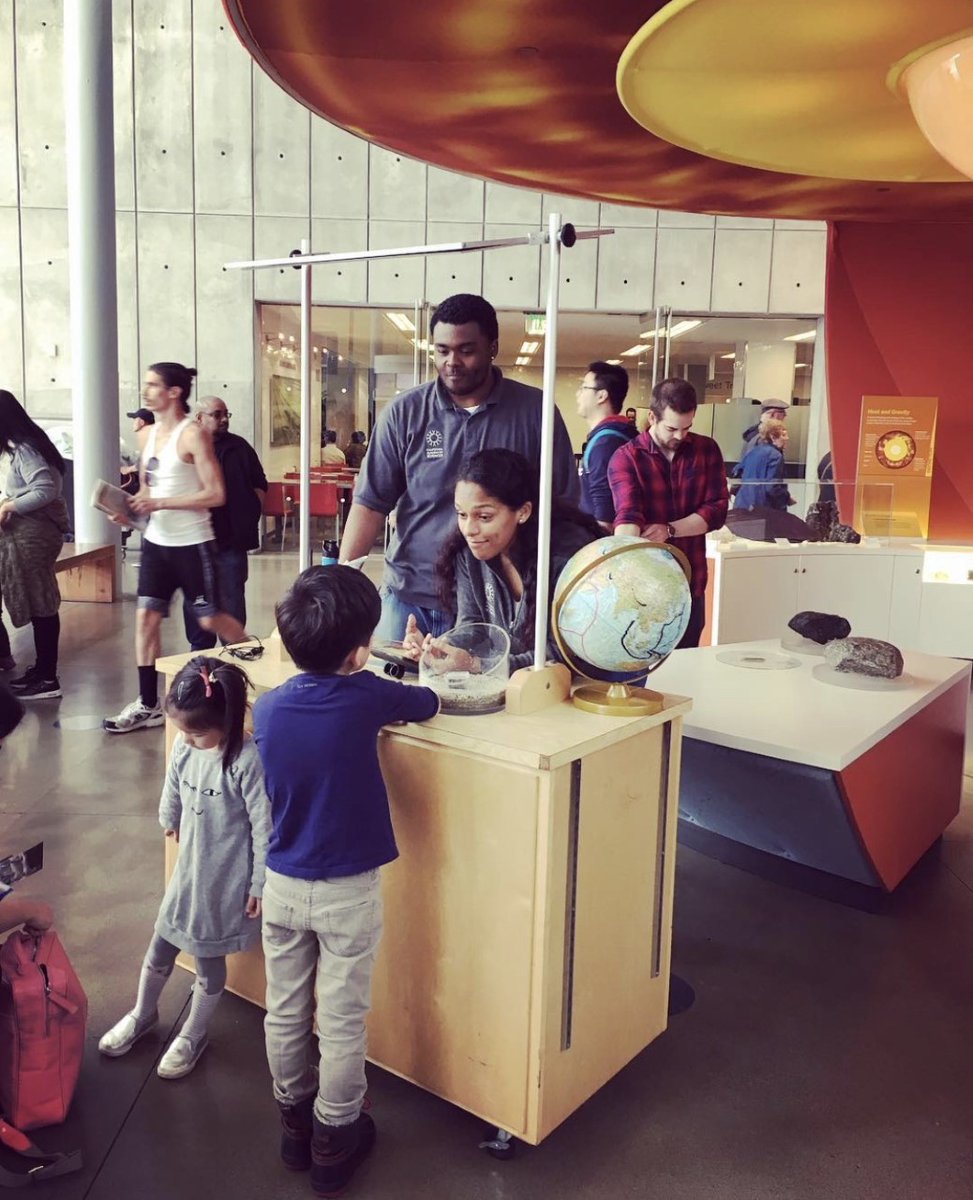Discover and read the best of Twitter Threads about #ResearchFriday
Most recents (9)
📢 You say research, I say Friday!
It's that time of week again, and today's #ResearchFriday is all about zombie cells... 🧟 (1/6)
It's that time of week again, and today's #ResearchFriday is all about zombie cells... 🧟 (1/6)

Cells in our immune systems, called T cells, help us fight infections and heal wounds.
As we get older, T cells can sometimes go wrong and become zombie-like. They don't die as cells naturally should and they turn other cells into 'zombies' too. (2/6)
As we get older, T cells can sometimes go wrong and become zombie-like. They don't die as cells naturally should and they turn other cells into 'zombies' too. (2/6)

🔬 Dr Sian Henson found that people with #Type2 diabetes have more zombie T cells than people without diabetes. It means wounds don’t heal as quickly and they could make you more prone to infections. (3/6) 

Did you know that it is National Postdoc Appreciation Week #NPAW? For #ResearchFriday, we are focusing on the great work of our early career researchers! Currently we have four @USGS postdocs working to improve the #ShakeAlert system. Let the shout-outs begin! @USGS_Quakes 

Dr. Noha Farghal has a Ph.D. in geophysics from @Stanford. Noha is working on incorporating fiber-optic sensors into the #ShakeAlert system. Check out her recent paper: The Potential of Using Dynamic Strains in Earthquake Early Warning Applications pubs.geoscienceworld.org/ssa/srl/articl… 

.@UCLA Bruin Dr. Grace Parker studies ground shaking and works on models to better estimate ground motion in SoCal for #ShakeAlert & best practices for using @PEER_Center NGA-Subduction ground motion models for Cascadia in EEW algorithms.@UCLACivil @Garrickinstitut #PDAW2020 

Hi everyone, it’s #ResearchFriday! On top of having 60+ physical scientists on #ShakeAlert we have a team of 30+ social scientists who study human interaction with ShakeAlert. Meet the Social Science Working Group (SSWG). Here’s our class picture from 2020! 

Why is social science important? Apart from sensors in the field, data processing centers, and alert delivery by our partners, people directly interact with #ShakeAlert. Anything that can improve that interaction, which often happens quickly, is critical to keeping people safe. 

So what does the SSWG do? They work on research projects that are critical to improving #ShakeAlert…for you. That means everything from messaging to graphics to what channels to use to how groups use ShakeAlert is studied by SSWG. 

Happy #ResearchFriday! How does #ShakeAlert work and how do our 60+ partners use it to keep people safe? Here's the latest creation from @IRIS_EPO and the ShakeAlert Education & Outreach team - a new video to explain a pretty complex system. Please share! 

Even #ShakeAlert animations are based on research. What went into making this new resource? Every detail counts and geologist Jenda Johnson spent hours getting everything just right. Just to animate Drop, Cover, and Hold On took 100+ individual frames! @ECA @waShakeOut @ShakeOut
Then there’s the work of pulling a team together to develop the story, get the facts right, and manage the review process. #ShakeAlert team member and seismologist Dr. Danielle Sumy led a team of over 10 people who weighed in on all aspects of this project.
Meet our newest #ShakeAlert team member, recent @pitzercollege grad Mariah Jenkins. A double major in geology and environmental analysis, she will explore, design, and implement resources and programs that focus on access, inclusion, and diversity in ShakeAlert. 

Optimizing how 50+ million people interact with earthquake alerts is critical to the success of #ShakeAlert. Mariah is up for the task and she will be working with researchers at @OMSI and @UOsojc to apply what she learns to real world settings. @OregonOEM @waEMD @Cal_OES
At Pitzer, Mariah was a Robert Redford Conservancy Fellow. She worked with local community groups, indigenous community leaders, local politicians & students, on sustainability projects in Southern CA. At @calacademy she facilitated informal learning experiences. @rrconservancy 

It’s #ResearchFriday! Welcome Meredith Morgoch to the #ShakeAlert team! As a @UOsojc doctoral student at @uoregon, she’s studying how theory can inform the design of effective messaging that empowers people to perform preparedness practices and disaster mitigation behaviors. 

Throughout her career Meredith has focused on strategic communication, natural disasters, new media and technology, and citizen agency, all critical areas that will help us better understand and improve how people interact with #ShakeAlert.
The heart of Meredith’s research is to understand how diverse communities including the most vulnerable among us comprehend and act upon disaster and hazard information. Meredith’s results will improve the accessibility of #ShakeAlert for all people. @Cal_OES @OregonOEM @waEMD
Hi everyone! It’s #ResearchFriday! #ShakeAlert is constantly looking for ways to improve the System. One way we learn is to ask “What if?” questions. Today let’s ask: What if the ShakeAlert System had been operating with 2020’s technology during the 1994 Northridge earthquake?
At 4:30 am on 1/17/94 a M6.7 earthquake occurred near Northridge, CA. The shaking it generated caused damage throughout Los Angeles County, including the San Fernando Valley. There were 57 deaths, over 9000 injuries, and billions of dollars in property damage.
Our goal in studying this is to have a better idea how #ShakeAlert could perform for a moderate earthquake impacting a major urban area. 

Hi everyone, it’s #ReseachFriday! This week’s focus is on #ShakeAlert alerting regions! This study looked at using the 2019 Ridgecrest earthquakes to find an optimal alerting strategy. pubs.geoscienceworld.org/ssa/bssa/artic…
So, the #ShakeAlert system detects an earthquake, it uses ground motion models (GMMs) to determine the size of the alert region using earthquake source estimates as input (generally, magnitude and location). 

Welcome to #ResearchFriday where we highlight how we’re constantly improving the #ShakeAlert System whether it’s about Earth science, technology, alert delivery, or even how people and automated systems interact with alerts.
This week, it’s some social science! This study brought together many experts to figure out how to improve communication with people after a #ShakeAlert Message is issued and an alert is delivered to your phone or other wireless device.

